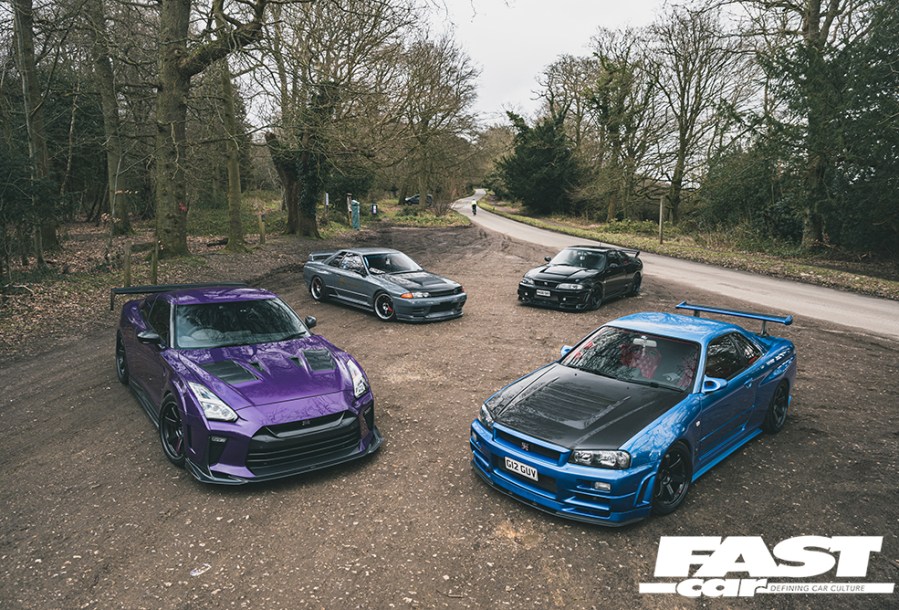Godzilla is a pretty ferocious beast as it is, but if you want to extract more power out of it, you certainly can. Here’s our Nissan GT-R tuning guide.
Nissan’s GT-R badge has been stuck to the back of some of Japan’s finest sports cars over the years. Naturally, that means that people who love to modify cars, love to modify GT-Rs.
Whether it be the RB26 or VR38 engines, the all-wheel drive, or even just the stocky styling; there’s plenty to get excited about with these cars. So, whether you own a Bathurst-beating R32, or a supercar-baiting R35, here’s some of our top tips for tuning a Nissan GT-R.
Nissan Skyline GT-R R32 Tuning Guide
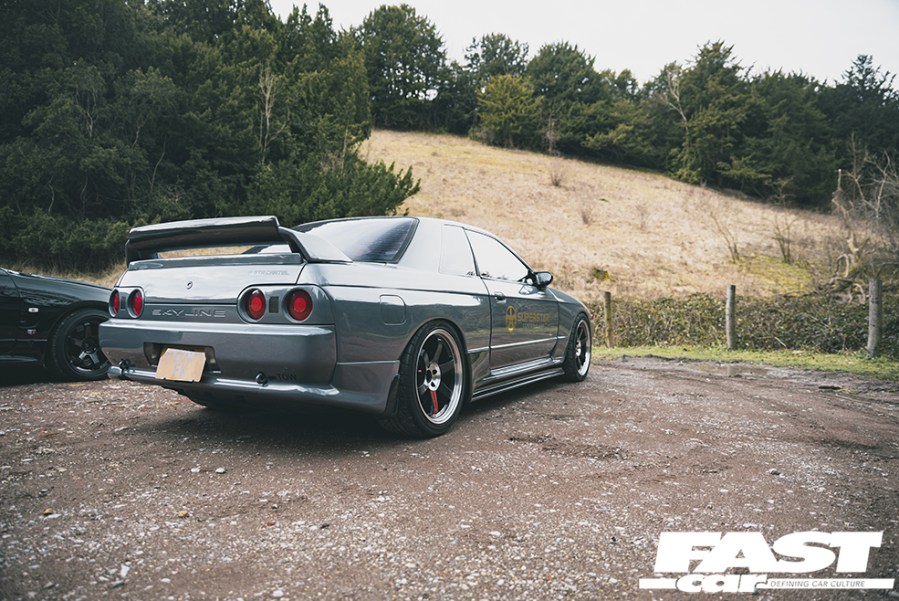
The R32 GT-R heralded the arrival of some major Nissan innovations. It was the first car to be equipped with the much-loved RB26 engine, and also brought with it features such as ATESSA-ETS all-wheel drive and Super HICAS rear steering.
Nissan originally intended for the R32 GT-R to conquer the world of Group A racing, and it certainly did that. In Japan it was literally unbeatable, and in Australia it caused enough of a stir for the Aussies to brandish it with that ‘Godzilla’ nickname. So, although roadgoing examples didn’t have the same performance credentials as their circuit-bound counterparts, they did share the same core engineering. As a result, that meant that there was a mountain of untapped potential lurking in the R32’s engine bay, just waiting for tuners to get their hands on it.
That they certainly did, and these days there’s now a very strong aftermarket for performance-enhancing R32 parts. Here’s some of the key areas to focus on:
Powertrain Upgrades
- Steel turbines will endure much better than the (likely worn) ceramic ones that came in the car’s stock turbo set-up. You can also go bigger with aftermarket turbos from the likes of HKS or Garrett. Those bolt-ons tend to top out at 500PS, which is intentional, as that’s roughly the maximum that the standard fuel pump, injectors and air flow systems can handle. If your chasing bigger figures, you’ll need to upgrade those elements of the car too.
- The R32’s stock exhaust system is quite restrictive, so to get those gases flowing more efficiently, consider getting some performance-oriented pipework. We’ve collated some of the best Skyline exhausts around – check them out here.
- Companies like Link, Motec, or Haltech produce standalone aftermarket ECU maps for the R32 – a great way to free up some extra ponies, while keeping your engine’s health monitored too.
Handling Upgrades
- Not happy with the feel of the ATESSA limited-slip differentials? Well, OS Giken offers uprated ‘Superlock’ LSDs for both axles.
- If you’ve got a bog standard R32, fitting it with some simple V-Spec springs & dampers can help the car to feel more athletic. Of course, there’s also a wide array of coilover options out there too for optimal adjustability.
- Not everyone likes how Super HICAS rear-steering feels when you push the car to its limits. Happily, you can get HICAS eliminator kits to delete that function from your R32.
- R33s and R34s came with Brembo brake kits, so if you can find a set of those, it’ll be a great way to improve your R32’s stopping power while keeping things OEM. Of course, there’s plenty of aftermarket rotors and pads available for the R32 as well.
- Upgraded anti-roll bars and a refreshed geometry alignment will do wonders to the way your R32 handles.
Aesthetic Upgrades
- With 7x16in rims as standard, the R32 is ripe for some extra rubber. This can be either with some wider tires to increase the car’s footprint, or a swap to some larger 17in or 18in wheels. Either way, you should ensure the wheel and tire sizes are the same all round or you will encounter problems with the four wheel drive system. A 9.5 x 18in wheel with a 265-section tire is the recommended sweet spot.
- The R32’s interior is rather dated now, but you can spice things up with a tasteful set of bucket seats and harnesses. Those seats will give you better confidence behind the wheel too.
Looking for a more detailed tuning guide, specific to the Nissan Skyline GT-R R32? Click here.
Nissan Skyline GT-R R33 Tuning Guide
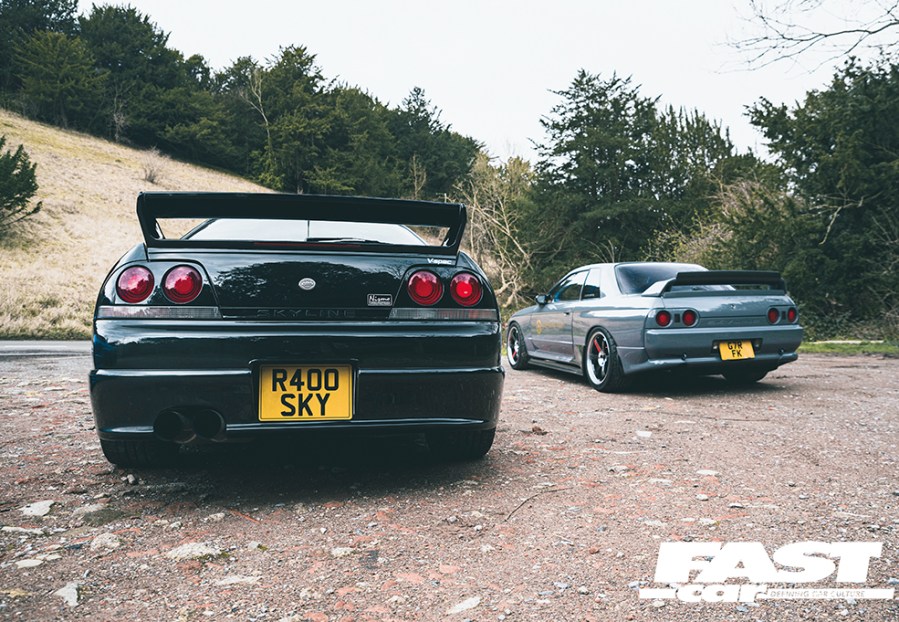
The R33 Skyline GT-R always used to be the model that everyone would overlook. I mean, even here, that pesky grey R32 has crept its way into the R33’s portrait. However, if market prices for the R33 are anything to go by, this car could be about to have a bigger share of the limelight.
And to be honest, it’s about time. Sure, it might be longer and heavier than the R32 and less technologically advanced than its successors, but the R33 still makes for a brilliant starting point when modifying a car. The official quoted stock horsepower figure is 276hp at 6500rpm, though given the Japanese ‘gentleman’s agreement’ of the mid-90s, it’s fair to assume that the real figure is a little higher. It’s got 271lb ft of torque too – 11lb ft more than the R32.
So, if you want to build on its strengths and iron out some of the car’s dynamic weaknesses, here’s how to do so:
Powertrain Upgrades
- The stock exhaust system is rather restrictive, so most R33 owners opt to swap it out. A full 3-inch or larger system with a de-cat pipe (or, ideally, a free-flowing sports cat) and new turbo downpipes will improve throttle response, let the motor come on boost faster, and can increase power by around 25PS.
- To complement the freer flowing exhaust, an uprated panel filter element fitted to the stock airbox, modified with the bung removed from the side of it, is a great addition. If you boost the engine to above 500PS, you’ll be reaching the flow limit of the stock airbox and will need to ditch it in favor of a pair of aftermarket cone filters, one for each of the RB26’s twin turbochargers.
- Standard turbos can be tuned up to 14psi, so long as you use a reputable tuner that knows what they’re doing. If you want more, you’ll need to upgrade to steel turbines rather than ceramic ones, or swap out the turbos entirely for aftermarket kits from the likes of HKS or Garrett.
- Extra boost means the stock intercooler will start to struggle, so an intercooler upgrade is highly recommended if you are upping the boost considerably, even though the standard items have been proven at over 600PS.
Handling Upgrades
- Not happy with the feel of the ATESSA limited-slip differentials? Well, OS Giken offers uprated ‘Superlock’ LSDs for both axles.
- If you’ve got a bog standard R33, fitting it with some simple V-Spec springs & dampers can help the car to feel more athletic. Alternatively, a Nismo S-Tune kit would provide further adjustability, while the Nismo R-Tune set-up is best applied to track-only machines. Of course, there’s also a wide array of aftermarket coilover options out there too.
- Not everyone likes how Super HICAS rear-steering feels when you push the car to its limits. Happily, you can get HICAS eliminator kits to delete that function from your R33.
- Upgraded anti-roll bars and a refreshed geometry alignment will do wonders to the way your R33 handles.
Aesthetic Upgrades
- With 9x17in ET30 rims as standard, the R33’s cavernous arches can accommodate 18s or 19s without problem. Being four wheel drive you will need to ensure front and rear tires are the same size but you should be able to run a 10 or even 11in wide rim with some 305-section tires without much more than a light rolling of arches.
- Fancy splashing some cash on a bit of carbon fiber? Seibon and Knight Racer have a range of R33 body kits for you to choose from
Looking for a more detailed tuning guide, specific to the Nissan Skyline GT-R R33? Click here.
Nissan Skyline GT-R R34 Tuning Guide
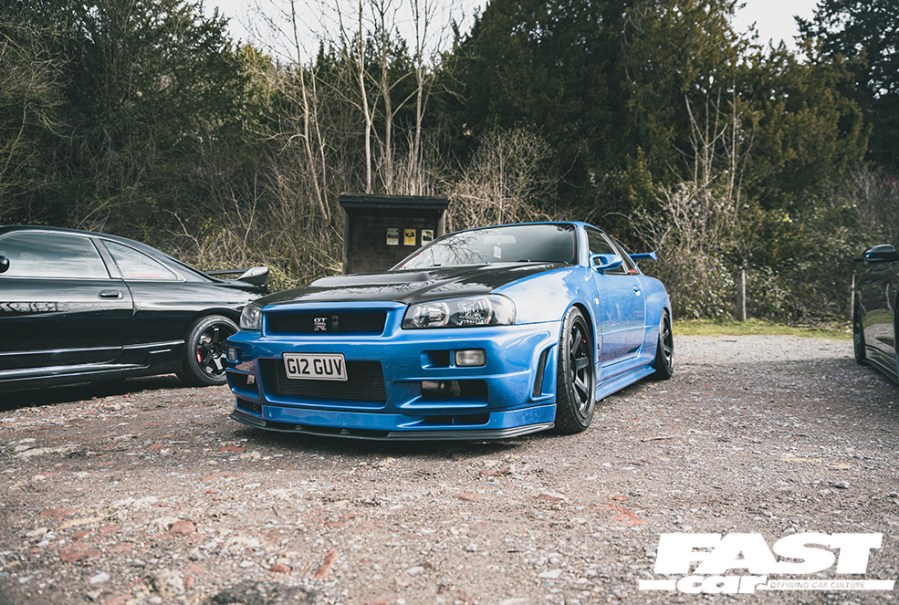
You might think twice about modifying an R34 nowadays, given how insanely valuable they’ve become. Still, if you believe that car ownership is about having fun rather than lining your pockets, then you should know that the R34 is a prime candidate for tuning.
Like the earlier GT-Rs, you get the heavenly RB26, but unlike those older cars, you also get a sixth gear and a number of small improvements, such as ball-bearing twin-turbos and the ‘Pro’ version of ATESSA-ETS as standard. Overall, everything about this car was designed to feel just that little bit better than before. When packaged together, those small differences can make a big impact. So, if you want to build the ultimate 90s-era Skyline, you almost certainly have to start with an R34 as your base.
Here’s some of the things that your build should take into account:
Powertrain Upgrades
- The R34 will benefit from an exhaust system with an internal bore of 3 inches or larger, with big gains made with the fitment of a free-flowing sports cat. Throw in some new turbo downpipes and you will not only increase the peak power by up to 25PS but also speed up turbocharger spool and improve throttle response.
- Unlike the earlier R32, the R34 has turbos which feature steel internals. As such, you can push the stock turbo to around 1.0 bar of boost, no issue.
- Once you hit the 400PS point, you’ll need to invest in larger fuel injectors and an uprated high-flow fuel pump.
- The further up the power range you climb, the more you’ll need to start thinking about forged rods and a stronger head gasket. The 600PS point (or slightly earlier to be safe) is roughly when strengthened internals will be necessary.
- A standalone ECU will complement any engine mods nicely. Aftermarket software will offer much greater scope for altering the parameters of the engine including fueling, timing and boost, plus additional control for extra sensors and hardware.
- The stock intercoolers have been proven at over 500PS, but can struggle when extra boost is added. An intercooler upgrade is highly recommended if you are upping the boost considerably.
Handling Upgrades
- In the grand scheme of things, the R34’s suspension is hardly sub-par. However, even this JDM titan can feel a little wallowy when pushed to the limit. Nismo parts are likely to cost an arm and a leg, but if you can’t afford to part with one of your limbs, plenty of other aftermarket brands supply full coilover kits for the R34. Those will give it more poise and a lower stance, and give you the luxury of some extra adjustability.
- Not everyone likes how Super HICAS rear-steering feels when you push the car to its limits. Happily, you can get HICAS eliminator kits to delete that function from your R34.
- Upgraded anti-roll bars and a refreshed geometry alignment will do wonders to the way your R34 handles.
- The R34 features the same excellent Brembo brake set up as its R33 predecessor. However, with some performance brake pads, you can further improve bite and also reduce fade when used in extreme situations, such as on track.
Aesthetic Upgrades
- The market for these cars has gone through the roof of late with many owners looking for factory standard looks, however, that doesn’t mean you have to. Countless carbon fiber parts are available from lips and diffusers to full body panels. Body kits are more limited, mainly focusing on offering the lines of the rarer special edition models such as the famous Z-Tune. Aftermarket kits from Nismo and Do-Luck are also available and give a more aggressive look the to the R34.
Looking for a more detailed tuning guide, specific to the Nissan Skyline GT-R R34? Click here.
Nissan GT-R R35 Tuning Guide
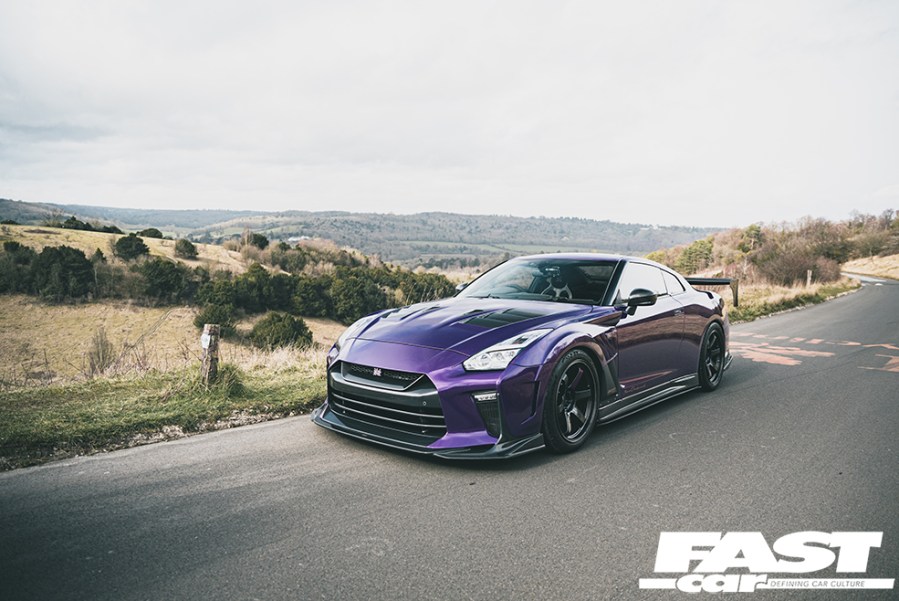
When the R35 first launched, rumors circled around suggesting that it was so technologically advanced that it simply could not be tuned. Of course, that quickly proved to be a load of nonsense, and nowadays the R35 base canvas forms the basis of some of the world’s most potent modified cars.
Designed to take on supercars from the factory, tuned R35 Nissan GT-Rs have the potential to take you to a whole new dimension of speed. We’ve heard of R35s reaching as much as 3000 horsepower and 250mph+. Really, this car is a performance tuner’s dream.
Powertrain Upgrades
- The VR38 is even stronger, and more capable than the RB26. Well over 1000PS is achievable on pump fuel, and that figure can double if you go down the route of running on meth.
- The R35’s standard exhaust system features two sets of catalytic converters, and it’s the second set of these located in the Y-pipe section that should be your first port of call to replace (with high-flow sports cats) if you are looking to unleash more power – and a deeper, more aggressive exhaust note – from your GT-R. There are plenty of more comprehensive exhaust kits on the market too, varying from 3 to 4 inches in bore, with a wide variety of tailpipe sizes and designs.
- If you want to keep the stock airboxes, then filter experts such as K&N offer direct replacement panel filters which offer increased airflow while still retaining excellent filtration properties. However, these will only take you so far and, eventually, you will need to bin the stock airboxes and replace them with a pair of larger bore induction pipes with high-flow cone filters.
- The R35’s standard turbochargers are effective up to around 650PS, with a suitable ECU remap and supporting mods. Above this level, you’ll need to replace them.
- Most tuners recommend an upgrade to 1100cc fuel injectors if you’re running more than 600PS.
- The stock conrods are the weak point of the VR38 engine and can fail if too much is asked of them. Upgrade to forged replacements once you hit 600PS.
- ECU mapping systems can add huge tuning options to the standard ECU, including advanced features such as data logging, rolling boost and extended boost gauge functionality. On top of that, the GT-R’s complex ECU-controlled gearbox is also tweakable for faster, more aggressive shifts too.
Handling Upgrades
- The problem with the standard front differential on the R35 GT-R is that it is an open design. This can result in the inside front wheel losing traction as the car squats coming out of corners on power. The all-wheel-drive system then reacts and tries to move the power to the rear, further upsetting the balance. An uprated LSD massively reduces inside wheel slip without any negative side effects, while increasing steering feel, front-end grip and stability.
- Stiffer springs and dampers (ideally as part of well-calibrated coilover set) offer greater body control and the ability to tailor the way the car looks and handles.
- Early R35s are now up to 15 years old now, so the OEM bushes are likely to still have some life left in them, but if you do get any which have perished or split, replacing them will be a priority.
- uprated, stiffer/thicker anti-roll bars will reduce the effect that weight transfer has on the car’s body roll when cornering.
- Improving your brake set up is without doubt one of the best and most important upgrades you can make to your GT-R. OEM discs are very good when new, but the drilled design leaves them with an innate weakness.
- The R35 comes with run flat tires from the factory, which although can help you out if you get a flat and enable you to still drive to safety or to a garage for replacement, they do not offer the same kind of ride or grip as you will get from a set of non-run flat options
Aesthetic Upgrades
- There are countless wheels available for the GT-R in sizes from 20-22 inches which will fit in the cavernous arches without issue.
- If you’ve got an older R35, you can update it with a fresh MY2017+ facelift, thanks to Knight Racer’s enhanced conversion kit. If widebodies are more your thing, you’re spoilt for choice. Though, soon even that will be out of date, given the upcoming 2024 GT-R facelift.
Looking for a more detailed tuning guide, specific to the Nissan GT-R R35? Click here.
Further Inspiration
If you want to take your quest into the GT-R aftermarket even further, feel free to check out the links below:

